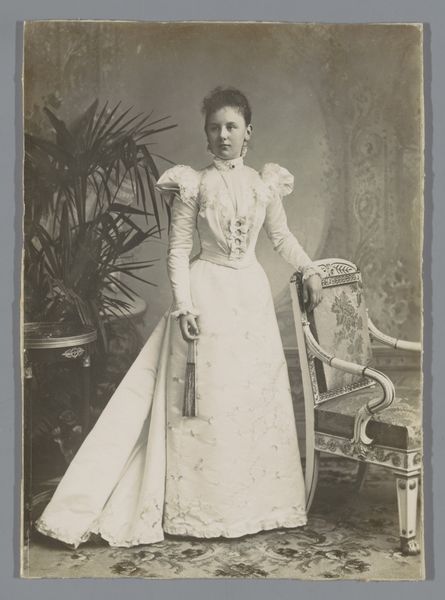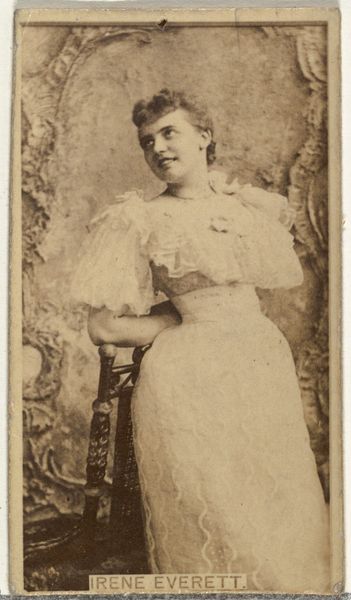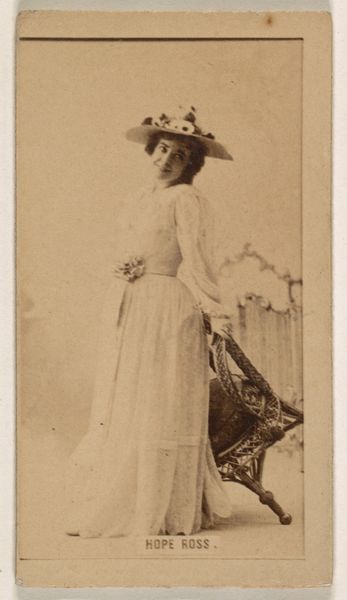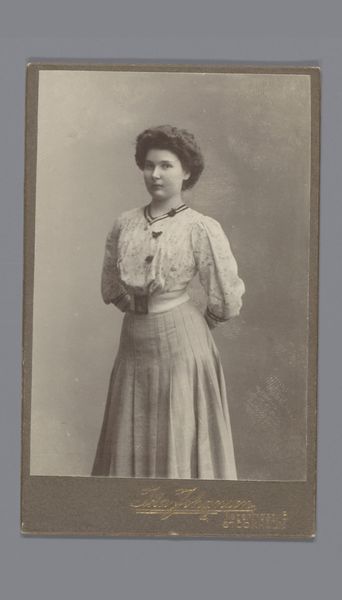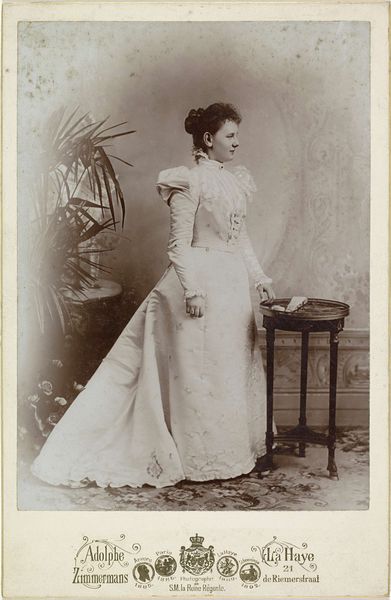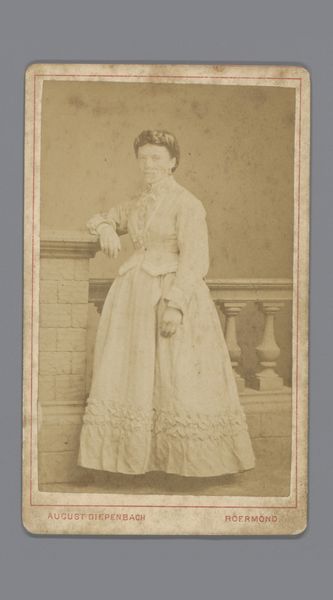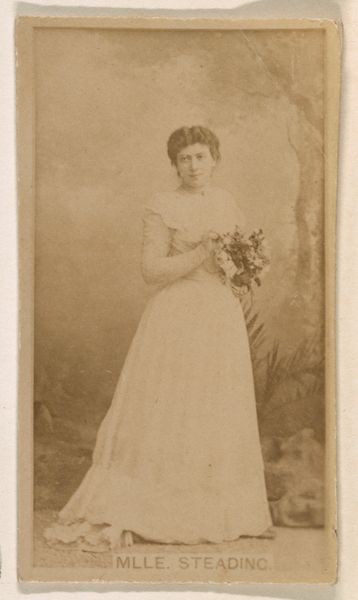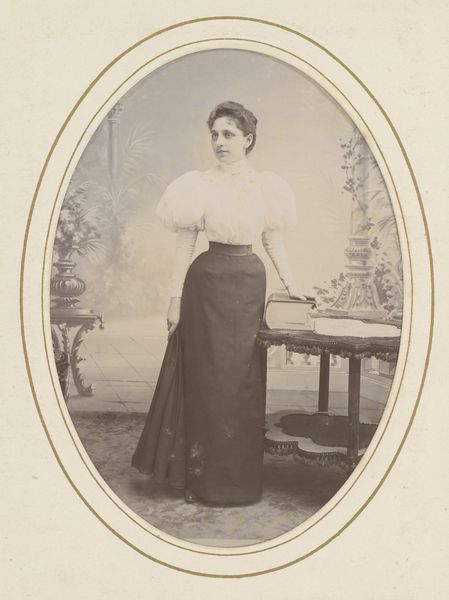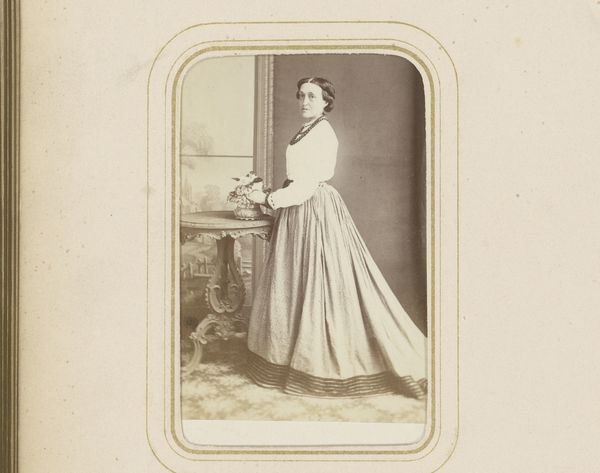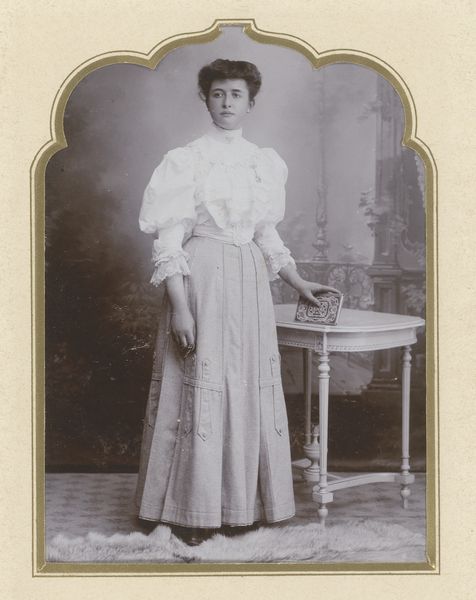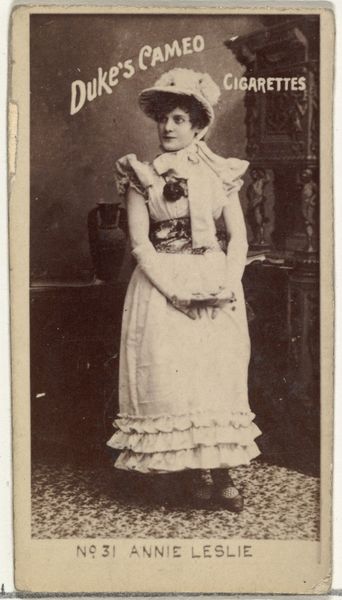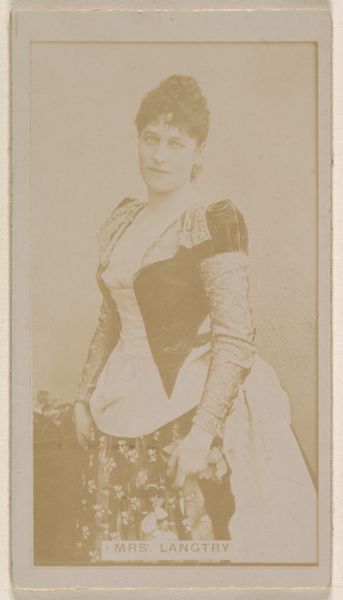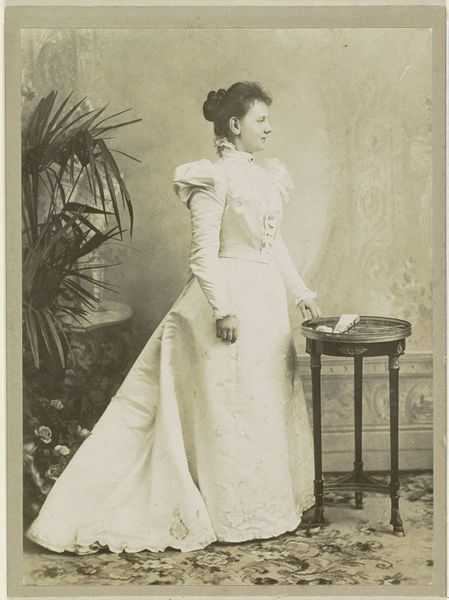
photography
#
portrait
#
photography
#
historical photography
#
19th century
#
realism
Dimensions: height 104 mm, width 63 mm
Copyright: Rijks Museum: Open Domain
Curator: I am struck by the sheer whiteness. Everything is bathed in an almost ethereal pallor; it lends the photograph a dreamy quality. Editor: Indeed. What we are viewing here is a photograph entitled, "Portret van prinses Wilhelmina, met waaier," which translates to "Portrait of Princess Wilhelmina, with Fan," taken in 1897 by Adolphe Zimmermans. The portrait resides in the Rijksmuseum's collection. What does that 'whiteness' suggest to you, in terms of iconography? Curator: It speaks of purity, of course, and innocence – common symbols for young women in portraits of that era. The white dress, the almost porcelain skin… but there's also an element of constraint. It hints at the pressures and expectations placed on her, as a member of the royal family and future Queen. The fan feels like a tool for both display and self-shielding. Editor: Fascinating observation. Considering the formal elements, I'm drawn to how Zimmermans uses light. Observe how it softly illuminates the Princess’s face and dress, creating a delicate contrast with the darker background elements, such as the foliage and wallpaper. The tonality, though limited, effectively directs our gaze and constructs the Princess's presence. Curator: Absolutely. It directs the viewer’s focus while also highlighting texture – the delicate lace, the intricate embroidery… And notice, also, how she's leaning against a chair, but not sitting. It's as if she's posed but also poised, ready to act, reflecting her role within a changing world. The plant seems to mimic the organic energy that Wilhelmina also embodies, but in a far less free-flowing manner. Editor: Yes. And the composition creates a clear hierarchy. Her stance, leaning yet upright, subtly implies strength within the constraints of royal expectations. In its delicate semiotics, the photograph is effective as both art object and symbolic projection. Curator: In conclusion, a rather subtle encapsulation of societal expectations embodied by Wilhelmina during a complex historical moment, which continues to intrigue modern audiences. Editor: It offers an accessible entry point for examining photography’s historical role, particularly as an aesthetic conveyor of political and social positioning.
Comments
No comments
Be the first to comment and join the conversation on the ultimate creative platform.
